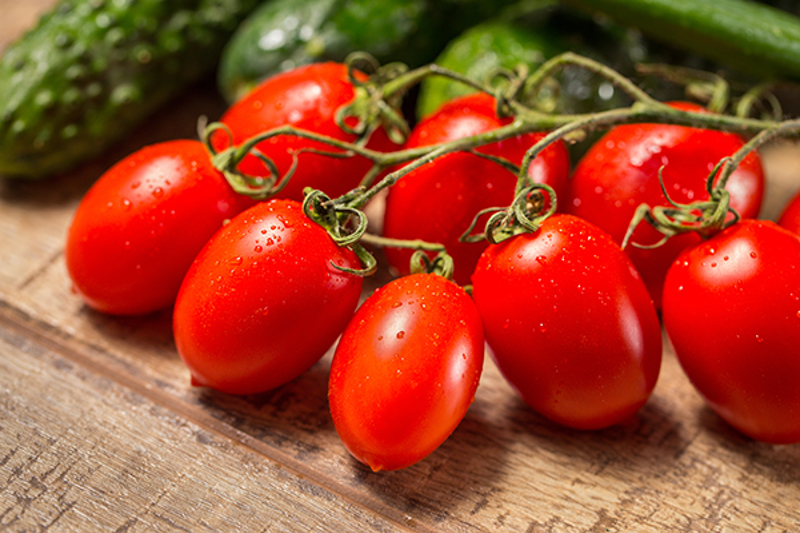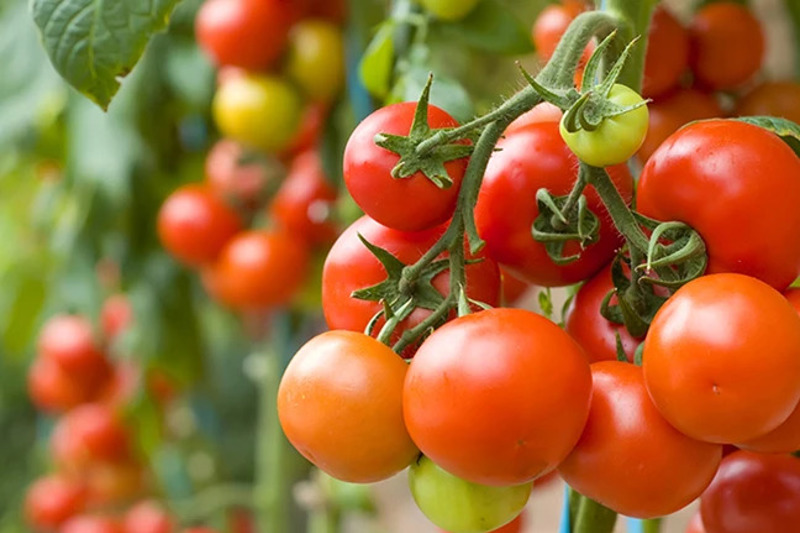Yates Account
Join now
Create a Yates account today!
Sign up to join the Yates Garden Club for monthly e-mails packed with seasonal inspiration, tips for success & exclusive promotions.
Plus if you’re a Garden Club member you can take part in the Yates Growing Community - a blog to share successes, get advice & win prizes in fun challenges along the way!

Forgot password
Enter the email address associated with your account, and we'll email you a new password.

Saucy!
It's hard to find a better cooking tomato than the classic Roma variety. Roma has deep red, medium sized, distinctively elongated plum-shaped fruit. Because they have dense, meaty flesh, they’re ideal for sauces, paste, bottling, soups and sun or slow-oven drying. Their low juice and high pectin content mean they cook down beautifully to make rich, intensely flavoured sauces.
Roma tomatoes are often thought of as Italian tomatoes; however, it seems that they originated in the United States in the 1950s. Romas have the classic Italian ‘San Marzano’ paste tomato in their family tree, but there are now also Italian Roma varieties available, which complicates things! Wherever they came from, Romas are a fantastic and versatile tomato to grow at home.
All around New Zealand during November gardeners sow Yates Tomato Roma seed. Seed can be sown direct where the plants are to grow or started off in trays or small pots and transplanted to their final home when they’re around 5 – 7 cm high. Yates Roma Tomatoes can be grown in a sunny spot in either a vegie patch, or in pots, and don’t need staking.
Once the seedlings are established, feed tomato plants with Yates Thrive Tomato Granular Plant Food. It contains a custom blend of fast feeding nitrogen, phosphorus and potassium to promote healthy leaf growth and lots of flowers and tasty tomatoes. It has added calcium and magnesium to help protect plants from trace element deficiencies, and the controlled release nitrogen in Yates Thrive Tomato Granular Plant Food will also feed tomato plants gradually for up to 12 weeks.
Yates Roma Tomatoes will be ready to pick from around 11 weeks after sowing.
To protect tomatoes from the most common insect pests, spray the plants each week with Yates Nature’s Way Pyrethrum Insect Spray Concentrate. It contains pyrethrin, which is a natural extract from the pyrethrum daisy, and controls a range of pests including aphids, whitefly and caterpillars.

How to grow the best home-grown tomatoes.
Tomatoes are near the top of the list the most popular, versatile and delicious fruiting vegies to grow at home.
Our 4 top tips for a fantastic tomato harvest:
-
Support tall growers - tall growing tomatoes such as Yates Tomato Grosse Lisse and Yates Heirloom Yellow Pear will need a support to grow on. You can use tall tomato stakes with soft twine or pantyhose or tomato cages.
-
To ‘pinch’ or not? - extra side shoots, (AKA laterals) begin to form in the leaf bases on tall tomato plants. They can be pinched out to allow in plenty of sunshine, abundant flowering and larger individual trusses of fruit. However, on smaller growing determinate tomatoes, leave the laterals in place to increase the number of flowering trusses for a bountiful harvest.
-
Consistent water and food - water regularly and deeply at the base of the plant. Avoid splashing water over the foliage, to help reduce the chances of fungal problems like blight and mildew. Watering potted tomatoes is especially important, as they dry out much faster than in-ground tomatoes. Mulch the soil around the base of the plants with lucerne or pea straw, to help retain soil moisture. Feed each week with Yates Thrive Tomato Liquid Plant Food, a complete tomato food that’s boosted with extra nutrients to promote improved yield.
-
Control pests - tackle repeat offenders tomato fruitworm, aphids and tomato/potato psyllid by spraying tomato plants every 7 – 14 days with Yates Mavrik Gun Insect Mite Spray Concentrate.
















Share
Share this article on social media